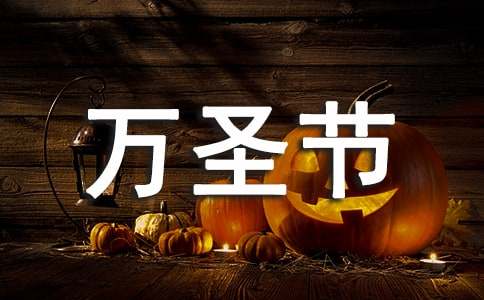萬圣節(jié)資料英語
萬圣節(jié)是諸圣節(jié)(All Saints’ Day)的俗稱,本是天主教等基督宗教的宗教節(jié)日,時間是11月1日,下面小編跟大家一起了解一些關(guān)于萬圣節(jié)的事情吧!

【萬圣節(jié)的`來歷】
Every November 1,, is Catholic celebrate festival holiday All Hallows Day or All Saint 's Day.
Halloween (or Hallowe'en) is an annual holiday observed on October 31, which commonly includes activities such as trick-or-treating, attending costume parties, carving jack-o'-lanterns, bonfires, apple bobbing, visiting haunted attractions, playing pranks, telling scary stories, and watching horror films.
Historian Nicholas Rogers, exploring the origins of Halloween, notes that while "some folklorists have detected its origins in the Roman feast of Pomona, the goddess of fruits and seeds, or in the festival of the dead called Parentalia, it is more typically linked to the Celtic festival of Samhain, whose original spelling was Samuin (pronounced sow-an or sow-in)".
The name is derived from Old Irish and means roughly "summer's end".Snap-Apple Night (1832) by Daniel Maclise.Depicts apple bobbing and divination games at a Halloween party in Blarney, Ireland.The name 'Halloween' and many of its present-day traditions derive from the Old English era.
The word Halloween is first attested in the 16th century and represents a Scottish variant of the fuller All-Hallows-Even ("evening"), that is, the night before All Hallows Day.
Although the phrase All Hallows is found in Old English (ealra hālgena m?ssed?g, mass-day of all saints), All-Hallows-Even is itself not attested until 1556.
【萬圣節(jié)前夜】
Halloween is a holiday observed 1 on the evening of October 31 in most areas of North America and in some areas of Western Europe. The word “Halloween” comes from “All Hallows' Eve.” November 1, “All Hallows' Day” (or “All Saints' Day”), is a Catholic (天主教的) festival observed in honour 2 of all saints. All Souls' Day, observed on November 2 to help purify 3 the spirits of the dead, is also closely linked to Halloween.
Most Halloween customs are based on folk beliefs concerning supernatural (超自然的) forces and spirits of the dead. Halloween decorations (裝飾) are typically images of supernatural beings such as witches, werewolves (狼人) , vampires, goblins (小妖怪) , and ghosts.
Images thought to symbolize bad omens 4 — such as black cats, bats, owls and spiders — are also commonly used as Halloween decorations. People once believed that ghosts roamed 5 the earth on Halloween.
They also thought that all witches met on October 31 to worship 6 the Devil. Today, most people do not believe in ghosts or witches, but these supernatural beings remain symbols of Halloween.
One of the traditions popular on the night of Halloween is trick-or-treat, the main Halloween activity for most children in the United States. Britain imported 7 the custom from America in the early 1980s. On Halloween many children wear ghost costumes 8 and masks or witches' hats and go from door to door to ask their neighbors for candy by saying “Trick or Treat!”
The saying implies that if the people in the house give the children a “treat” then the children will not play a trick on them. The neighbors, to avoid having tricks played on them, give the children such treats as candy, fruit, and pennies.
The most celebrated Halloween decoration is the jack-o'-lanterm (把南瓜挖空并雕成人面開形的杰克燈) , traditionally a pumpkin (南瓜) that has been hollowed out and carved 9 to resemble a grotesque (奇形怪狀的) face.
Most jack-o'-lanterns contain a candle or some other light, which makes the face visible from far away. People in England and Ireland once carved out beets (甜菜根) , potatoes, and turnips (蕪菁) to use as lanterns on Halloween. After this custom reached America pumpkins began to be used.
Dressing in costume is also one of the most popular Halloween customs, especially among children. Traditional costumes usually represent witches, ghosts, and other supernatural beings.
However, costumes inspired by contemporary (當代的) popular culture, such as politicians or movie characters, have become increasingly common in recent years. Adults often favor costumes with satirical 10 or humorous overtones (含蓄之意)。
【萬圣節(jié)資料英語】相關(guān)文章:
英語萬圣節(jié)資料10-26
萬圣節(jié)英語資料10-26
萬圣節(jié)的資料英語10-26
萬圣節(jié)的英語資料10-26
萬圣節(jié)英語小報資料10-25
萬圣節(jié)手抄報英語資料11-03
萬圣節(jié)英語手抄報資料11-05
萬圣節(jié)資料英文10-26